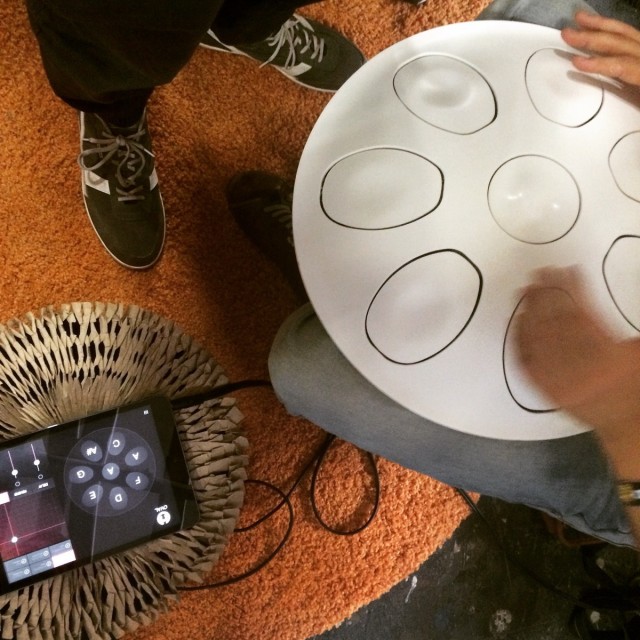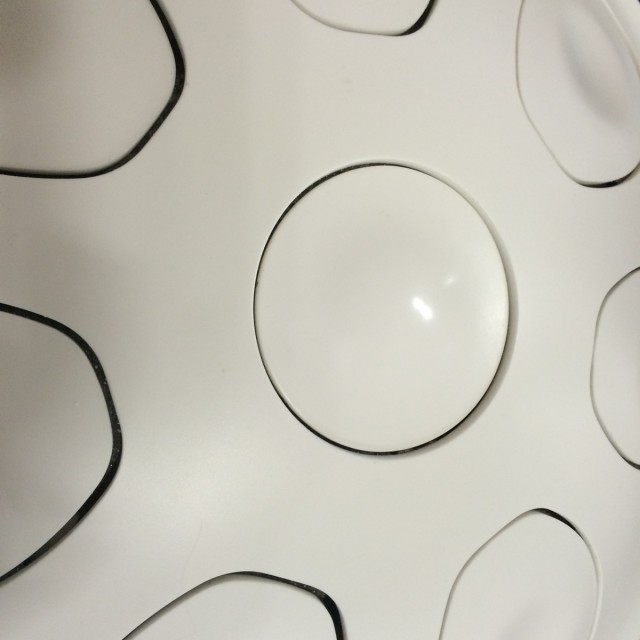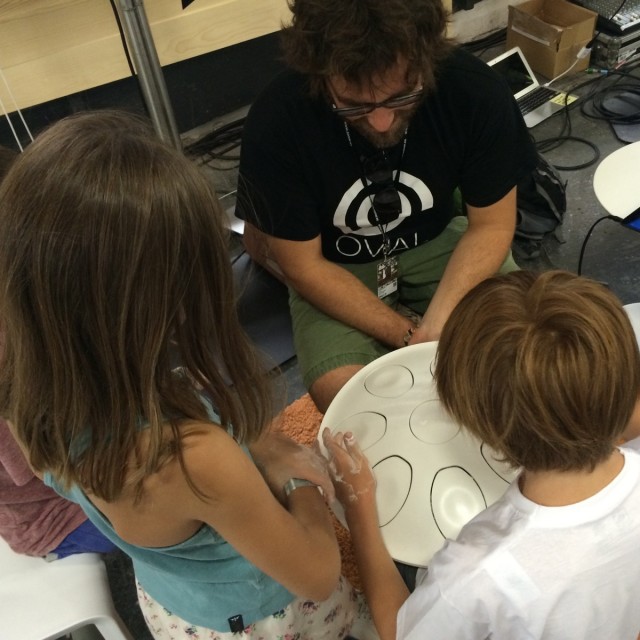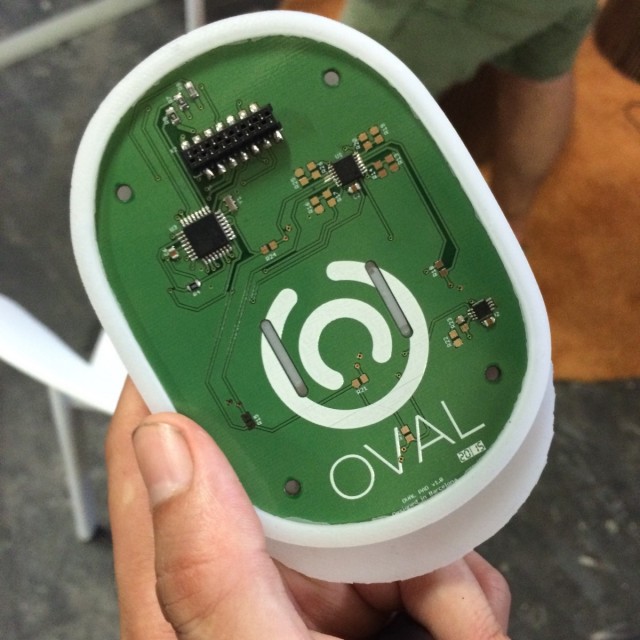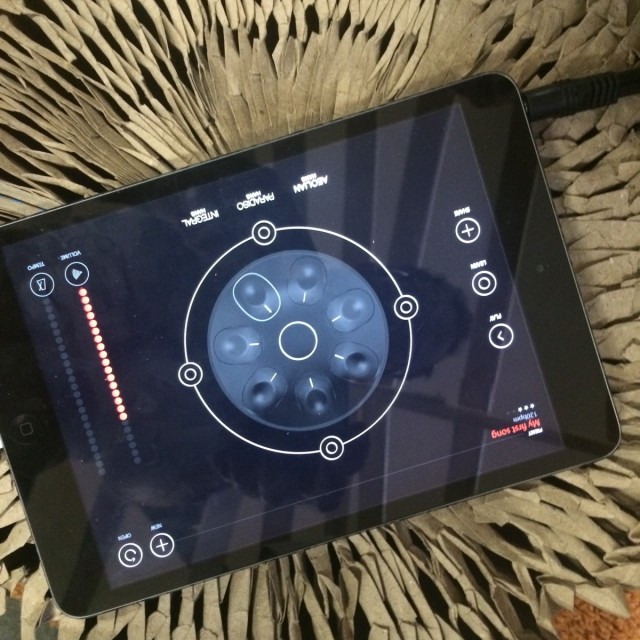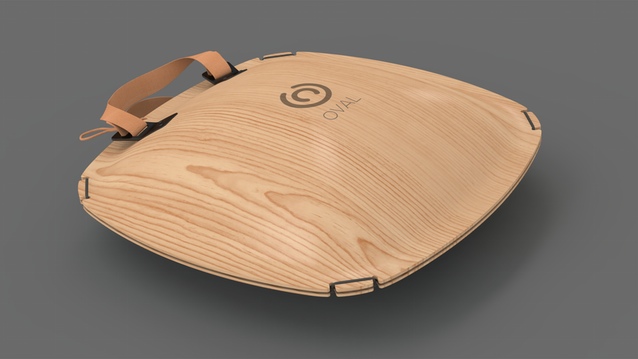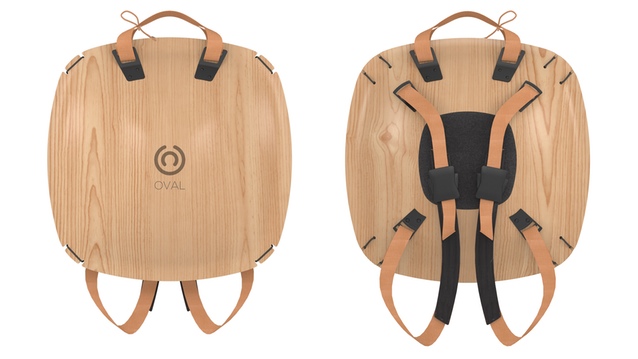Making a futuristic new music instrument requires more than just the spark of a clever idea. It needs resources, funding, input from musicians, and other ingredients, in perfect balance. Those dimensions can offer cold, hard reality, but met properly, they can also offer opportunity. And that’s part of what made Barcelona’s SONAR+D such a compelling place to be last week. Tucked into the packed SONAR festival was a convergence of the engineering, musical inspiration, and business knowhow required to make musical inventions.
The Oval, superstar of a pavilion hosted by Kickstarter, was the highlight for me. We saw it in the run-up to SONAR, as its crowd funding campaign was just taking off:
Hand Pan Percussion, Reimagined as Futuristic Musical Instrument
A hang drum or hand pan, reconceived as a digital instrument, it could prove a breakthrough in new instrument controller design as product. Meeting its creators in Barcelona, I got to try the first prototype and see how the version that will eventually ship to backers will be even better. And I have to say, I’m impressed.
First, let’s compare Oval, a digital controller, to the acoustic Hang that inspired it. The makers have made a video that makes that clear:
The Hang is itself a modern instrument, if an acoustic one. The Swiss-designed original was created in 2000, though it’s currently not in production. That instrument is closely related to older idiophones like the Steel tongue drum, but has a unique shape and resonance characteristics. It is itself contemporary – though broadly speaking, more conventional, in that it’s acoustic rather than digital.
Now, that doesn’t mean Oval is a replacement for a Hang or other related instruments. It’s better to understand it as a new, digital creation whose form and interface are inspired by acoustic percussion that preceded it. The genetics of one is derived from the other, each a unique beast, neither more or less meaningful than the other. Just as the MIDI keyboard opens up new possibilities made more accessible by its piano-like shape, we now appreciate having both an acoustic grand and a synthesizer with a manual.
What the Oval can do is play sounds and adapt to scales that the hang can’t. And that isn’t just a way to make music “easier” – it means a new hybrid that opens up flexible ways of playing melodic lines and timbres that other controllers might not so easily enable.
The Oval prototype sits comfortably in the lap. The sensors are basic in the first-generation model, but it’s already expressive and great fun to play; it responds nicely to different levels of velocity, and you get tangible feedback from the pads (more so than something like an MPC). This is also something you could take with you – heavy enough to keep from shifting around when you play it, and big enough to allow for sweeping gestures of the arms, but still light and compact enough to carry. I was concerned at SONAR+D about fitting it into a carry-on, but for mobile users, there’s good news below.
I’m also impressed that the wireless MIDI connection – now using the latest-generation Bluetooth – left me with no sense of latency or lag whatsoever. You play the controller, and magically, wirelessly, sounds come out of an iPad to a speaker. (Any compatible Bluetooth source will work.)
The case itself is a feat of ergonomics – inviting curves everywhere, and a smooth, organic-feeling, lightweight but rugged case forged of Corian. That’s right – the stuff you know from countertops is here made into a laptop flying saucer that feels both somehow traditional and space-age.
Here’s the Oval folks with a short film showing that prototype in action at SONAR+D:
It’s some of the new stuff that’s most interesting, however.
The biggest development the team showed me is the new sensing on the pads. While the prototype used one sensor, the new pads use five sensors for X/Y sensing – slight differences in where you hit the pads will result in different control messages. You can see the circuits embedded here. The design is inspired by the acoustic hang, which via overtones produces different sounds if struck in different locations.
There’s also an update to the iPad app, seen here – it’s already looking more polished, and the Kickstarter campaign hasn’t even concluded yet.
Also, thanks to resounding support from the community, Oval will go after its stretch goal and make a “shell” for the instrument that protects it and let you carry it, turtle style, on your back. It looks fantastic:
Here is the Shell for the Oval!
Early birds have already snapped up the 350€ models, meaning the cost of entry is now 499€ – a lot to invest for many of us for a non-shipping product. But you have a couple of weeks if you are ready to get onboard. And I’ll be sure to keep tabs as this progresses.
Oval – The First Digital HandPan [Kickstarter]
